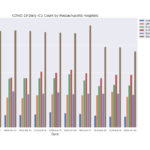Cards businesses collect data at a rapid pace. This data contains a treasure of information that can be harnessed to answer several pressing business questions. If handled correctly, it can reveal several phenomena such as customer attrition, up sell opportunities etc. A key challenge faced by card issuers and processors is to understand the customers they are serving. For example, a good understanding of the customer profiles can help tailor and target rewards and loyalty programs. This in turn results in improving customer satisfaction and retention.
Some key insights that the credit card issuers are trying to arrive at include understanding customer segments, predicting customer attrition and calculating customer lifetime value. Measuring LTV makes it possible to track changes in the customers’ LTV over time. This change (increase) in LTV is a true measure of economic value added to the business.
In the credit card business, building a model to calculate customer lifetime value is an attempt to predict net income from the future relationship with a customer. An accurate estimation of customer lifetime value shall help Ventis better target customers with products and services for up sell. We shall attempt to move to a sophisticated predictive analytics model to achieve this. We shall compare several predictive models with varying levels of sophistication to achieve the desired accuracy. The first part of the problem involves identifying the determinants for predicting customer lifetime value such as customer relationship life, retention probability, customer margin etc. Subsequently, these determinants need to be fitted into the model to predict the customer lifetime value.
A lifetime value of a customer is based on total probable spending over the period of the card. The end of the period is the card expiration date. There are two parts to the problem:
- Computing the probability that a customer will spend within a period of time
- The probability shall include the survival of the customer over this period of time. That is if the customer leaves the card, then the future spending value is 0
- Computing spending habit of each individual customer.
- Question here is how can we find the spending habits of the customer?
The spending habit shall be derived from Demographic data that includes:
- personal income – this will be golden data; however, we do not have this data
- we may cluster customer in a location – does this provide information that certain income category will leaving in same area. However, there are exception.
- we may cluster by spending habits and see we can drive more information
- Do we have details of spending?
Setting the context:
Calculating customer LTV is not going to be exact. However, using the right approach and assumptions, along with an iterative approach can lead to a good approximation of LTV for the cards business. The customer LTV shall help take the following strategic decisions:
- Identify and focus on acquiring high LTV customers
- Focus churn prevention on high LTV customers
- Differentiated service levels based on customers’ LTV
Possible data sources to be used:
Transactions, customer demographics, customer attrition, credit limits, utilization, monthly payment data. This data to be masked as appropriate.
This is one of the problem that allows Ventis to up sell and capture the customers.
Alternative approaches to calculate LTV:
- LTV = (Average purchase value – Average purchase frequency) x Average customer lifespan
OR
- LTV = { (Total Revenue/ Number of transactions) – (Number of transactions / Number of customers) } * Average customer lifespan
OR
- LTV = Gross margin * (Retention rate / [1+ Rate of discount – Retention rate]
Use Cases
- A customer max out the credit limit and pays until expiration
- A customer carries balance (not full credit limit) over time
- A customer pays full every cycle and no balance carried
- A customer defaults



